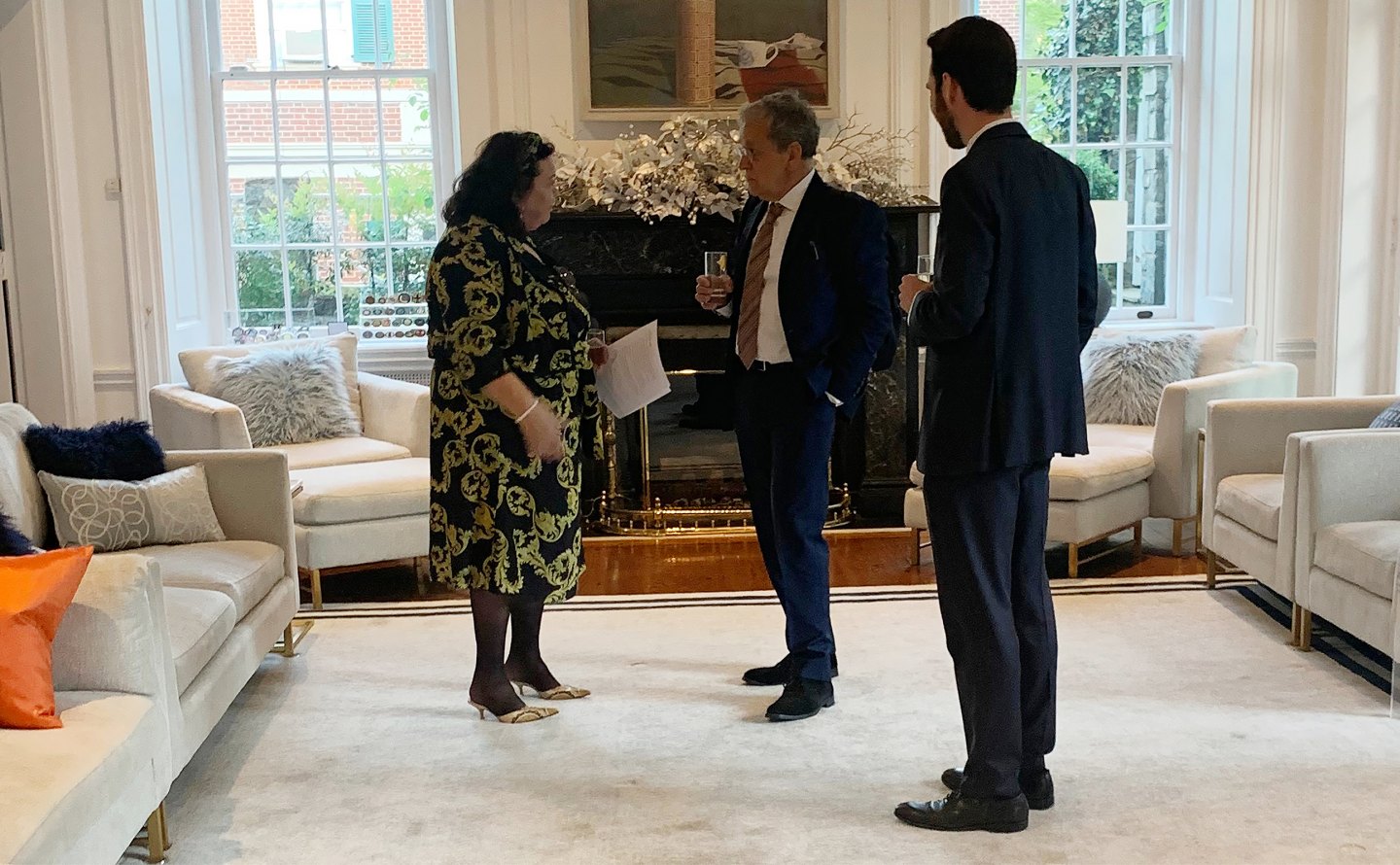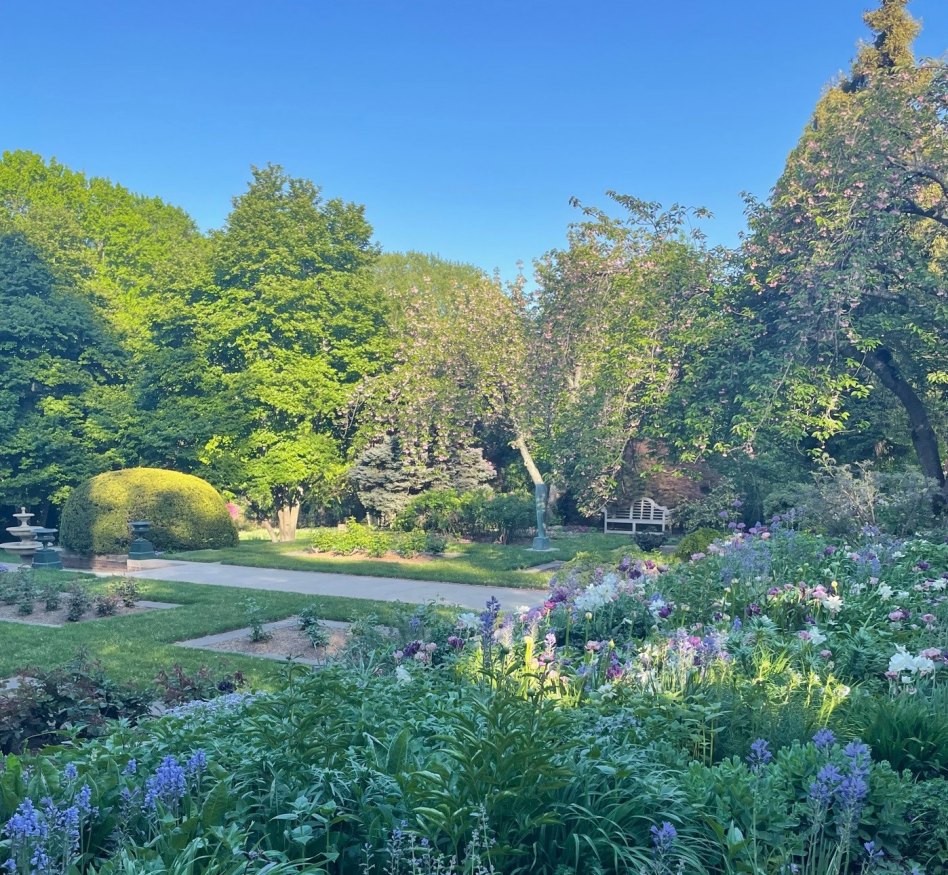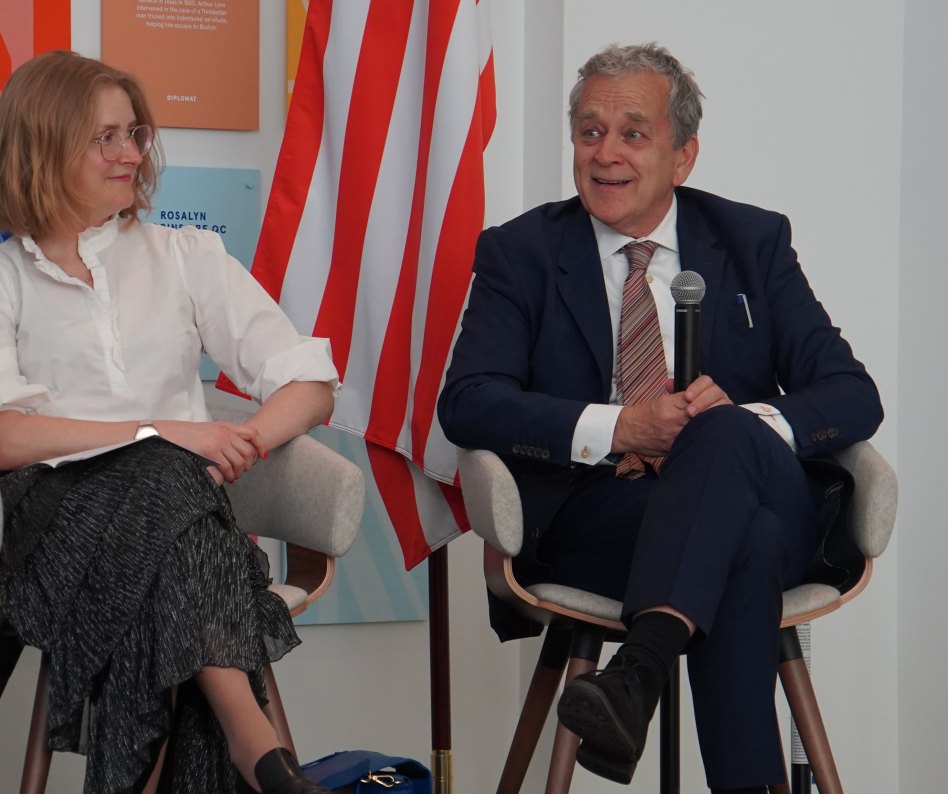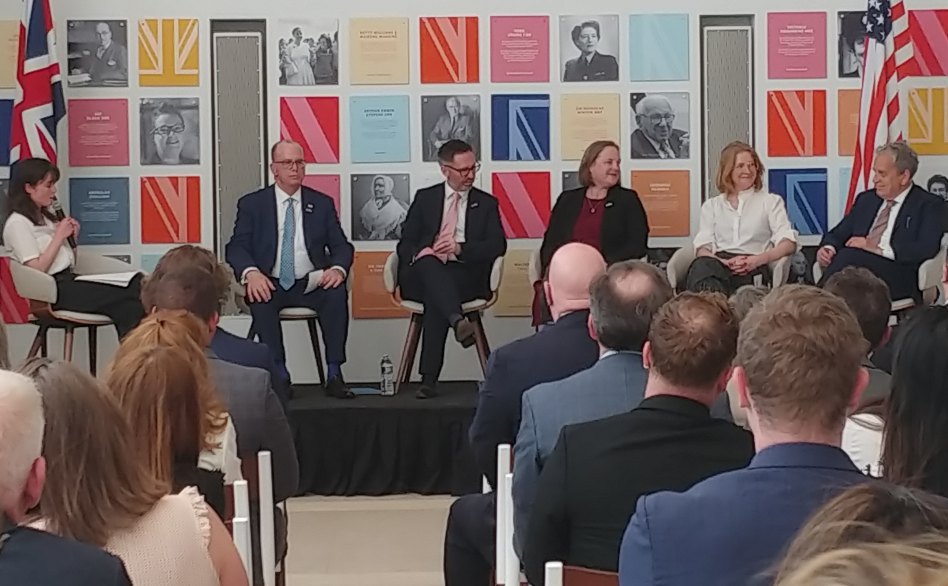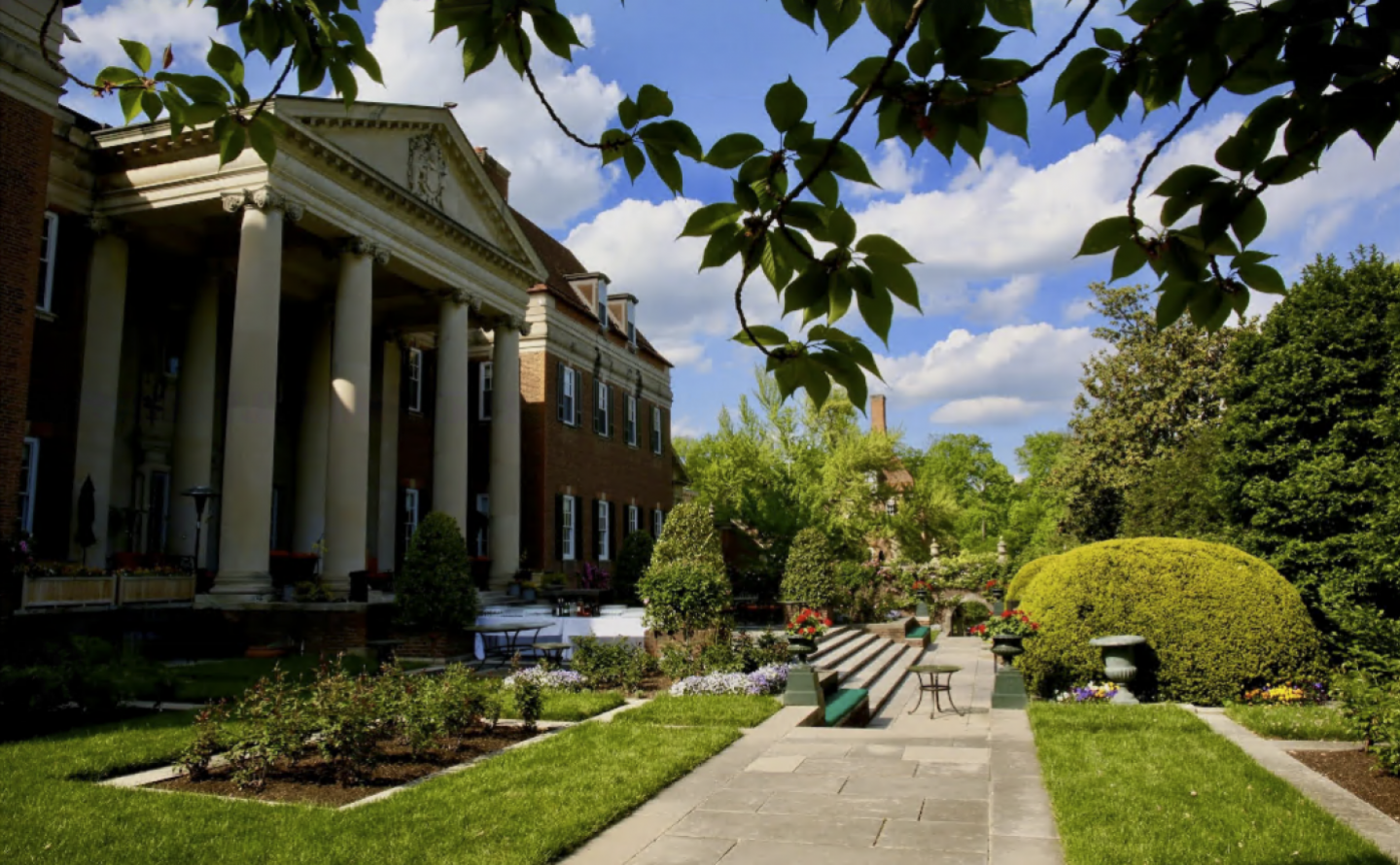
John McAslan, along with Michael J Armstrong the CEO & President of NCARB, Hugh Simpson the CEO of ARB, Emily Grandstaff-Rice the President of the AIA and Catherine Clarke the President of RIBA USA were members of a panel assembled at the British Embassy in Washington DC for a landmark event hosted by the British Ambassador, Dame Karen Pierce, to celebrate the launch of the UK-US Architecture MRA.
The UK-US Mutual Recognition Agreement between ARB and NCARB is a landmark moment. For it streamlines architectural registration processes with its recognition of the reciprocity of professional credentials between the UK and the US and supports mobility to facilitate practice across borders, whilst encouraging the sharing of skills and services at an individual and practice level.
John McAslan:
"If I may, I’d like to contextualise this landmark agreement with some personal remarks:
In my earlier years, I graduated as an architect from the University of Edinburgh and was drawn to the US to build my career, joining Cambridge Seven Associates in Massachusetts, where I enjoyed extraordinary opportunities. Indeed, some ten years later, I was to fashion my own architectural practice based on the studio-based model there. Whilst at C7A, I travelled widely across the US and marveled at the architecture from all periods, particularly in this country’s great cities, and I was most vividly enthralled by the work of, amongst others, HH Richardson, Frank Lloyd Wright, Richard Neutra and Louis Kahn, although I couldn’t quite figure out how Le Corbusier got to build his only US building at Harvard! However, much as I yearned to stay in the US, at that time it seemed impossible for me to become qualified and registered in the US and so I returned to the UK to continue my training with Richard Rogers before establishing my own practice in 1993. I was, though, able to realise my passion for seeking out trans-Atlantic opportunities several years later when we were commissioned to repair and update Frank Lloyd Wright’s final building at Florida Southern College, with Arup.And our trans-Atlantic collaborations continue today with our recent selection by Amtrak, NJT and MTA for the transformation of Penn Station in New York City in partnership with FX Collaborative and WSP.
The export of US architects to the UK really began in the early 1990’s with the arrival of big-scale American architectural practices to London, bringing their heightened design and technical expertise to the great financial houses in the City, as well as to Canary Wharf in London’s Docklands, where SOM’s elegant masterplan and celebrated buildings by KPF, Perkins & Will, Cesar Pelli and others demanded that UK architects raise their game in the design and delivery of commercial buildings.This ultimately opened up the US market to leading UK figures from that generation, notably Foster, Rogers, Grimshaw and Hopkins and, in time, to the next generation such as Hadid, Adjaye, Chipperfield and others, including my practice.
Interestingly, today much of the appeal of UK architects to US clients seems to me to focus around the sectors of culture, education and transportation.
It's also important to understand something of the relative UK and US contexts. Let’s not forget that, in population terms, the US is five times that of the UK whilst the US also enjoys a GDP some eight times that of the UK’s.In terms of architecture, the US is renowned for having some of the best architectural schools in the world, as indeed, has the UK, albeit on a more modest level.In terms of architectural practice, the UK has significantly more architects and practices than the US relative to the UK’s size, and whilst the US has proportionally more architectural practices of scale, the average size in both countries is broadly the same – at around 10 people.
In terms of architecture as a global business, 15% of UK architectural practices carry out international work, whilst in the US, that figure is significantly less, at around 10%. (For those who may be interested, my practice has around 60 people – 40 in the UK and 20 overseas, with 70% of our work outwith the UK). And whilst UK architects enjoy successes in international markets, the MRA will transform opportunities for UK architects to develop collaborative arrangements in the US, whilst for US architects, unquestionably, this Agreement will open up fresh opportunities to transfer their skills to the UK market across multi-sectors.
But the MRA goes much further than simply creating project opportunities. For the Agreement’s great promise must surely lie in its reciprocal benefits – namely: what the UK might learn from the US and what the US might learn from the UK through: collaboration and integration; architectural innovation; a greater understanding of sustainable practice and passive design; ecological restoration and integration; an enhanced approach to affordable housing; mutual advances in design and documentation technologies; alternative approaches to winning and managing work and, finally, being alert to and having a heightened responsiveness to cultural sensitivities in both countries."
John McAslan, RIBA, Hon FAIA
19 APRIL 2023
Washington DC
